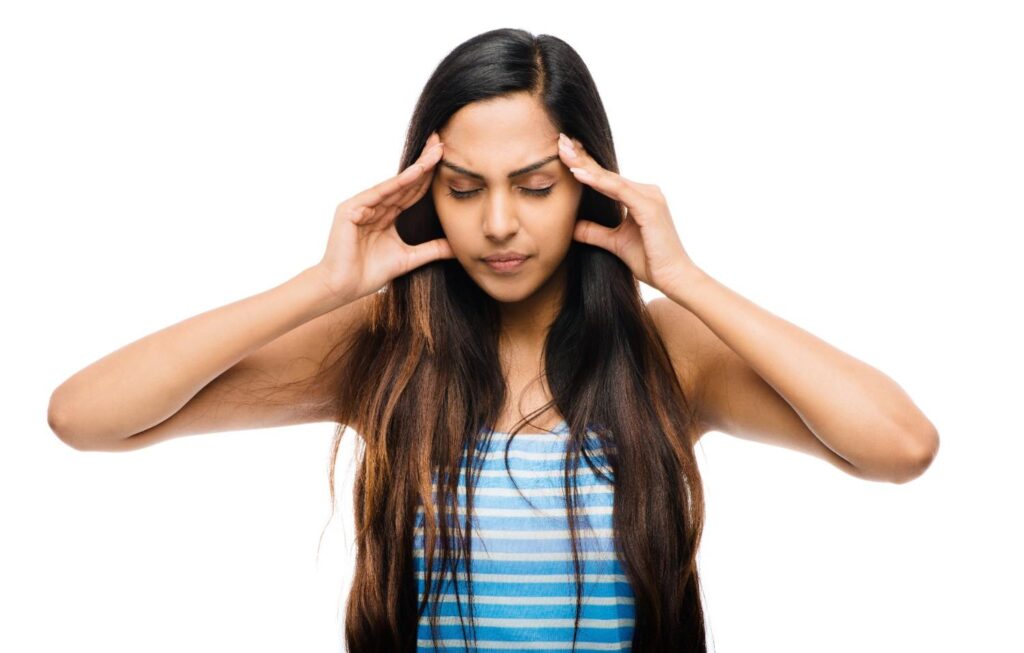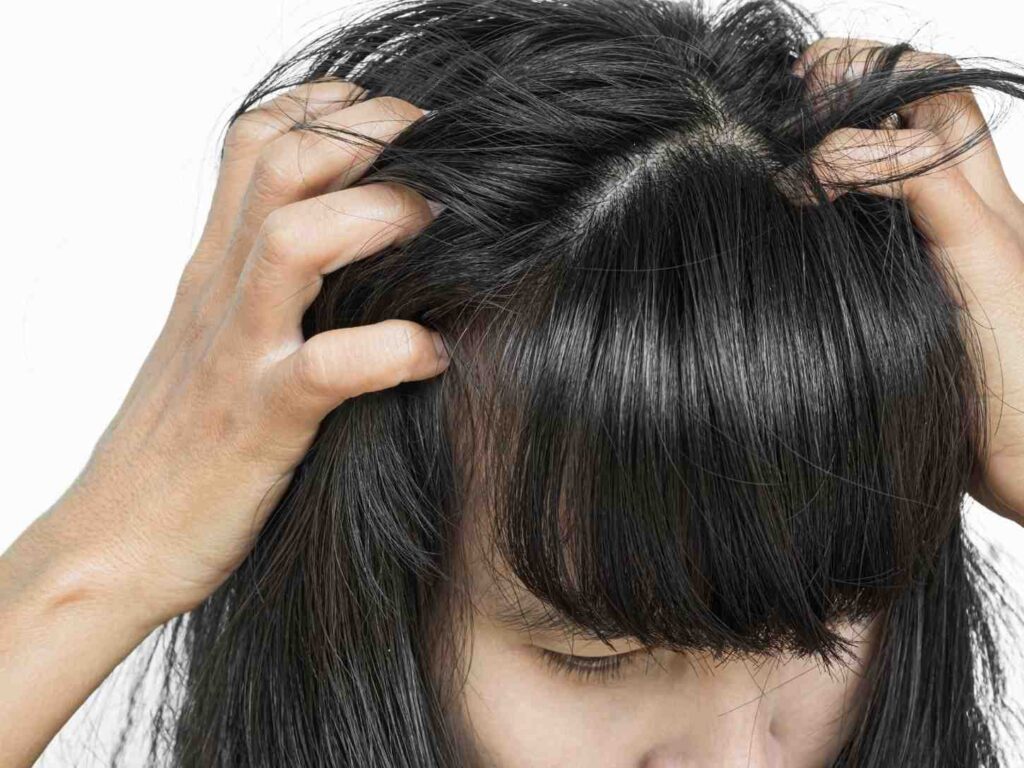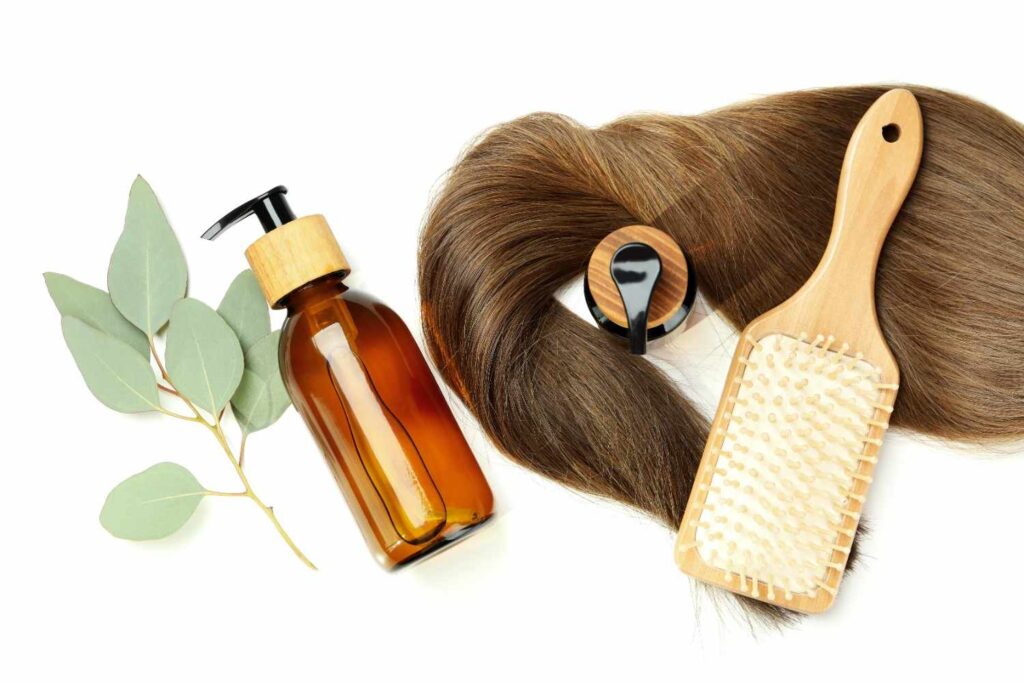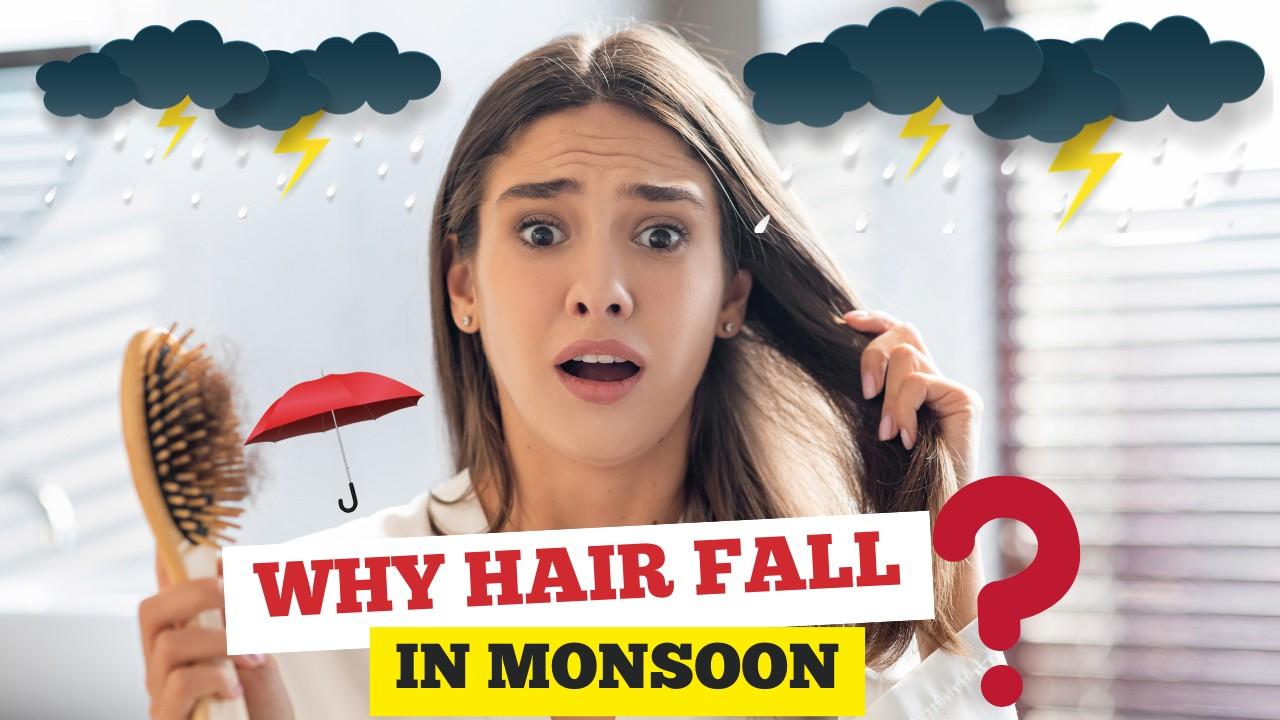
I. Understanding Hair Fall in Monsoon
A. The Natural Cycle of Hair
The human hair goes through three main phases:
- agen (Growth Phase): This is the growth phase where hair follicles produce new hair.-Catagen (Transition Phase): This short phase marks the end of active hair growth, lasting a few weeks.
- Telogen (Resting Phase): In this phase, hair is not growing but remains attached to the follicle for several months before shedding.
During seasonal changes, particularly in monsoons, these growth phases can be affected. Increased humidity and temperature fluctuations can lead to a disruption of the natural hair cycle, leading to excessive shedding.
B. Common Causes of Hair Fall

Several factors may contribute to hair fall during monsoon:
- Nutritional Deficiencies: Lack of essential vitamins and minerals can weaken hair strands.
- Genetic Predisposition: Family history of hair loss can increase susceptibility.
- Stress and Hormonal Changes: Stress, a common issue during seasonal transitions, may elevate cortisol levels, impacting hair health.
C. The Impact of Humidity on Hair

High humidity levels can significantly affect hair.
- Excess moisture in the air can lead to frizzy hair and exacerbate hair fall due to swelling of hair fibers.
- Humidity promotes perspiration, which can accumulate on the scalp and affect hair roots.
- Common issues include increased oiliness, tangling, and the propensity for fungal infections, which can damage hair health.
II. The Role of Weather in Hair Health
A. Monsoon Weather Patterns
The monsoon is characterized by high rainfall, fluctuating temperatures, and increased humidity.
- These changes can lead to environmental stress on hair, making it more prone to damage.
- The consistent dampness associated with monsoons can make hair look dull and lifeless.
B. Fungal Infections and Scalp Health

The damp conditions prevalent during monsoon promote fungal growth.
- Increased scalp moisture can lead to conditions like dandruff, which may be accompanied by itching and hair shedding.
- To prevent these issues, ensure the scalp is kept clean and dry, using mild shampoos and avoiding heavy oils.
C. Other Environmental Factors
Monsoon also brings additional environmental stressors:
- Pollution: Rain can wash pollutants into the air, making them more concentrated in your environment, which can adversely affect scalp health.
- Chlorinated Water: Frequent swimming can expose hair to chlorinated water, leading to dryness and hair breakage.
- Dust and Debris: The accumulation of dust due to rain and wind can further irritate the scalp and hair.
III. Dietary Considerations for Healthy Hair

A. Nutrient-Rich Foods for Hair Health
A healthy diet is crucial for maintaining hair strength:
- Proteins, vitamins (especially A, C, D, and E), and minerals (like zinc and iron) are essential for hair growth and health.
- Foods such as eggs, spinach, sweet potatoes, and nuts can provide necessary nutrients.
- Staying hydrated is also critical; drink plenty of water to support hair moisture levels.
B. Supplements to Consider
If dietary intake is insufficient, supplements may be beneficial:
- Biotin, Vitamin D, and Omega-3 fatty acids can support hair health.
- However, be cautious about over-supplementation; always consult a healthcare provider for personalized advice.
C. Foods to Avoid During Monsoon

Certain foods can negatively impact hair health during monsoon:
- Heavy, greasy foods can lead to increased oiliness, exacerbating scalp issues.
- Processed foods may lack necessary nutrients and contribute to inflammation, affecting hair.
- Avoiding junk food can help maintain a balanced diet conducive to hair health.
IV. Hair Care Routine for Monsoon
A. Choosing the Right Products

Selecting appropriate hair care products is essential:
- Use mild shampoos and conditioners that focus on moisture balance.
- Natural hair care products can be less harsh and kinder to your hair.
- Avoiding sulfates and parabens can prevent further hair damage.
B. Effective Hair Treatments
Incorporate regular treatments:
- Home remedies such as coconut oil massages can nourish the scalp and strengthen hair.
- Regular scalp massages stimulate blood circulation, which benefits hair follicles.
- Hair masks enriched with natural ingredients can provide added hydration.
C. Styling Tips to Reduce Hair Damage
Protecting hair through styling is key:
- Opt for protective hairstyles to minimize exposure to moisture and friction.
- Limit the use of heat styling tools, which can exacerbate damage during humidity.
- Reducing tension on hair by using gentle hair ties can prevent breakage.
V. Lifestyle Changes to Combat Hair Fall
A. Stress Management Techniques

Stress plays a significant role in hair health:
- Engaging in relaxation strategies such as meditation, yoga, or deep breathing can help manage stress.
- Regular physical activity can also boost mood and improve overall well-being.
B. Establishing a Sustainable Hair Care Routine
A consistent hair care routine is vital:
- Determine a washing schedule based on your hair type; avoid overwashing to maintain natural oils.
- Regular trims can help manage split ends and promote healthier hair growth.
C. Seeking Professional Help
For persistent hair fall, seeking professional advice is essential:
- Consult a dermatologist for scalp evaluations and treatment options.
- Understanding the role of trichologists can be beneficial for specialized hair concerns.
Conclusion
Hair fall during the monsoon is a common issue linked to various factors, including humidity, nutritional deficiencies, and environmental stressors. Taking proactive steps in your hair care routine, maintaining a healthy diet, and managing stress effectively can dramatically decrease hair fall. By being diligent and attentive, you can not only prevent hair loss but also promote the overall health of your hair throughout the monsoon season.
Find Ahmedabad’s Top 3 Dermatologists and get expert care! Click here to choose your ideal specialist today!
FAQs
-
Is hair fall normal in monsoon?
Yes, some hair fall during monsoon season can be normal due to environmental stress, but excessive shedding may need attention.
-
What are the signs of a serious hair loss condition?
Signs include significant thinning, bald patches, or excessive shedding that differs from your normal hair loss pattern.
-
Can certain hairstyles worsen hair fall in high humidity?
Yes, tight hairstyles can increase tension on the hair, leading to breakage, especially in humid conditions.
-
How to stop hair fall in rainy season?
Focus on a balanced diet, proper hydration, and a consistent hair care routine that includes gentle cleansing and conditioning.
-
Are there any specific products recommended for the monsoon?
Choose lightweight, moisture-rich products that are free from sulfates and harsh chemicals to maintain hair health during this season.
-
Why hair fall in monsoon?
Hair fall during monsoon can be due to increased humidity, which makes the scalp oily and prone to fungal infections. Additionally, excessive sweating and changes in weather conditions can weaken hair follicles, leading to increased shedding. Proper scalp hygiene and hair care can help mitigate these effects.
-
How much hair fall is normal in monsoon?
During monsoon, hair fall can increase due to higher humidity and moisture. It’s normal to lose 50-100 hairs a day, but if it significantly exceeds this or leads to noticeable thinning, it might be worth consulting a dermatologist. Maintaining scalp hygiene can help manage seasonal hair loss.

